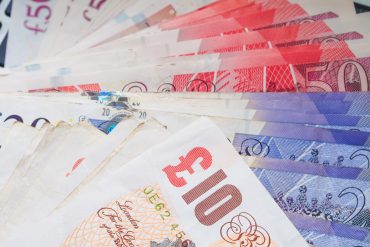A bond is a formal contract to repay borrowed money with interest with a floating rate of interest.
It is in essence, a certificate stating that the owner has lent money to a borrower, which will be returned at a specific date.
Bonds, like shares, can be bought and sold but unlike shares, they guarantee a percentage return, agreed at the point of investing.
How often do I receive interest?
A bondholder will receive regular interest – usually half yearly or annually.
Unlike with investment tied to Stocks and Shares, which can often sound exciting, the term ‘Bonds’ is somewhat archaic and as such can put a lot of people off using them, but for many serious investors, it makes sense for a part of their portfolio to be invested in bonds, due to their inherent security.
How do bonds work?
There are several parts to bonds, including:
-
Face Value/Par Value
This is the amount of money a holder will receive when the bond matures. A newly issued bond will sell for the ‘par value’. A corporate bond will usually have a par value of £1000 or $1000, but a government bond can have a much greater value.
-
Coupon (The Interest Rate)
This is the amount the bondholder will receive in interest. It is called a ‘coupon’ as sometimes there can be physical coupons on the bond to tear off and redeem for the interest payments.
This is a somewhat old-fashioned method, and it is more likely that the coupons are stored on computer nowadays.
Most bonds pay twice a year, but sometimes they can pay quarterly or monthly. The coupon is shown as a percentage, 10% for example, would pay 10% of the par value in interest per year.
-
Maturity
The maturity is the period of time that must expire before the initial investment is repaid.
Timeframes can range from 30 days to 100 years. A bond which matures in 1 year is much more predictable and less of a risk than one which matures in 10 or 20 years – thus, the longer the time before maturity, the higher the interest rate.
-
Issuer
The issuer of a bond is a crucial factor to take into consideration, as they ultimately are the ones responsible for returning your initial investment.
The ‘bond rating’ system helps investors assess a companies credit risk, and therefore the risk associated with their bonds. A government bond is classed as a risk-free investment, as the government will always be able to pay out. Conversely, a small company will have a low rating, as its future stability is hard to predict. Often blue-chip firms are seen as safe investments and have thus warrant a high rating.
It is important to say that not that not all bonds are safer than stocks, some types of bond can be just as unpredictable if linked to a company in financial instability.
-
Yield
Yield is the figure that illustrates the overall return you get on a bond. This is different from the percentage rate aforementioned.
With a Bond costing £1000 (with a 10% coupon), the yield is 10%, however if the value of the bond drops to £800, the yield goes up to 12.5%, as you are still receiving the £100 interest on the asset which is now worth £200 less than originally.






